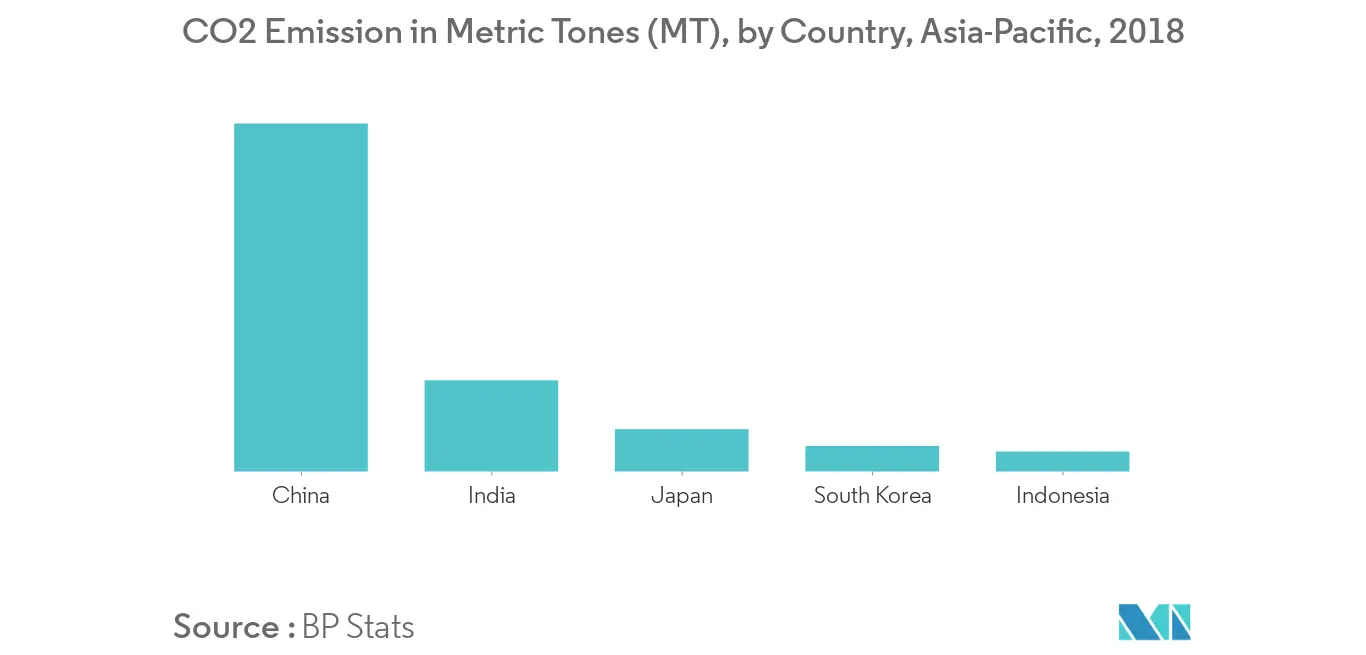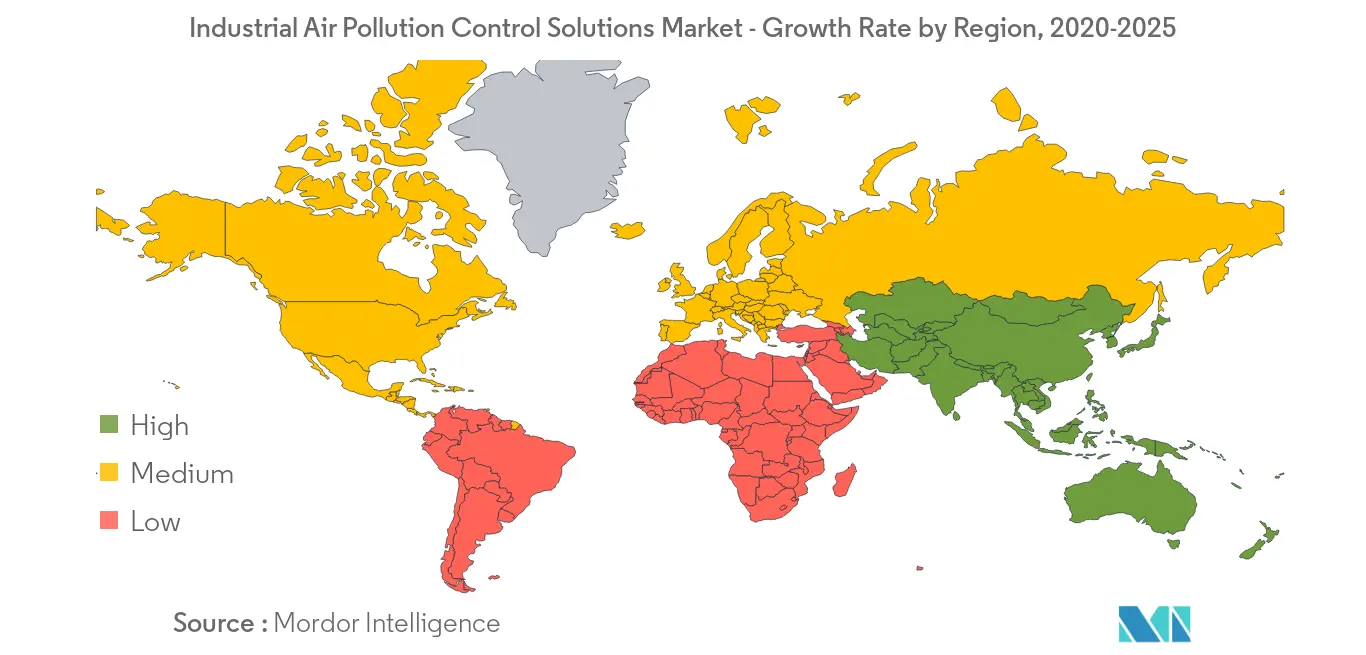Market Trends of Industrial Air Pollution Control Solutions Industry
This section covers the major market trends shaping the Industrial Air Pollution Control Solution Market according to our research experts:
Increasing Demand from Power Generation Industry
- In the power generation industry, power plants are the largest sources of emission of SO2, mercury, and acid gases. In the power sector, coal accounts for around 98% of SO2 emissions, 94% of mercury emissions, 86% of NOx emissions, and 83% of fine particulate emissions. About 42% of the world's power in 2018 was generated using coal. The production of the aforementioned harmful gases can be minimized using air pollution control solutions, such as electrostatic precipitators, scrubbers, flue gas desulfurizers, and mercury control systems.
- The growing concerns regarding environmental pollution and government actions to curb the same are driving the market. Stringent international and government regulations, such as, the Clean Air Act (CAA), and the Mercury and Air Toxics standard enforce the installation of systems that monitor and curb emissions to bring them to a safer level, in power generation companies using fossil fuels.
- Europe, which has mandated companies to employ high-quality air pollution control solutions, has the most stringent air pollution control laws for the industrial sector and with similar stringent laws been enforced in various regions the market for air pollution control solutions is expected to grow strongly during the forecast period.
- With the increasing restriction on the emission level in various industries by the government agencies the market for industrial air pollution control solutions is expected to increase during the forecast period.

Asia-Pacific Region to Dominate the Market
- The exponential growth in the industrial sector (which includes power generation, cement manufacturing, and chemicals and metal processing) has influenced the demand for air quality control solutions. With developing countries topping the list of most polluted countries, the many governments have been forced to implement laws and regulations for the emission standard in these countries forcing the pathway for the implementation of industrial air pollution control solutions in industries.
- Asia-Pacific is estimated to have the maximum share of the revenue from air pollution control solutions, in 2018, followed by Europe and North America. The growth rate of the Asia-Pacific region is projected to be the highest (4.69%) during the forecast period, primarily due to the presence of a manufacturing base in the emerging economies, such as China and India, and the high demand for power.
- The increasing rate of coal consumption, illegal mining operations, and less efficient industrial processes have led to the deterioration of air quality. In addition, the growing per-capita energy consumption and demand for the same are the major factors responsible for the high levels of greenhouse gas emissions. To control rising emission the Central Pollution Control Board (CPCB) has implemented air pollution control norms and standards that mandate the installation of air pollution control solutions in all industries.
- China adopted tough emission standards for sulfur dioxide (SO2), nitrogen oxide (NOx), and particulate matter (PM), for the newly constructed, and existing power plants in 2012 and 2014, respectively. In addition, all newly constructed and existing power plants are subjected to mercury emission standards from 2015. These environmental regulations have further propelled the demand for industrial air pollution control solutions in the country.
- With the major economies trying to shift toward renewable for the energy generation most coal-fired power plant is expected to get decommissioned during the forecast period, which might lead to the stagnant growth of the market.


